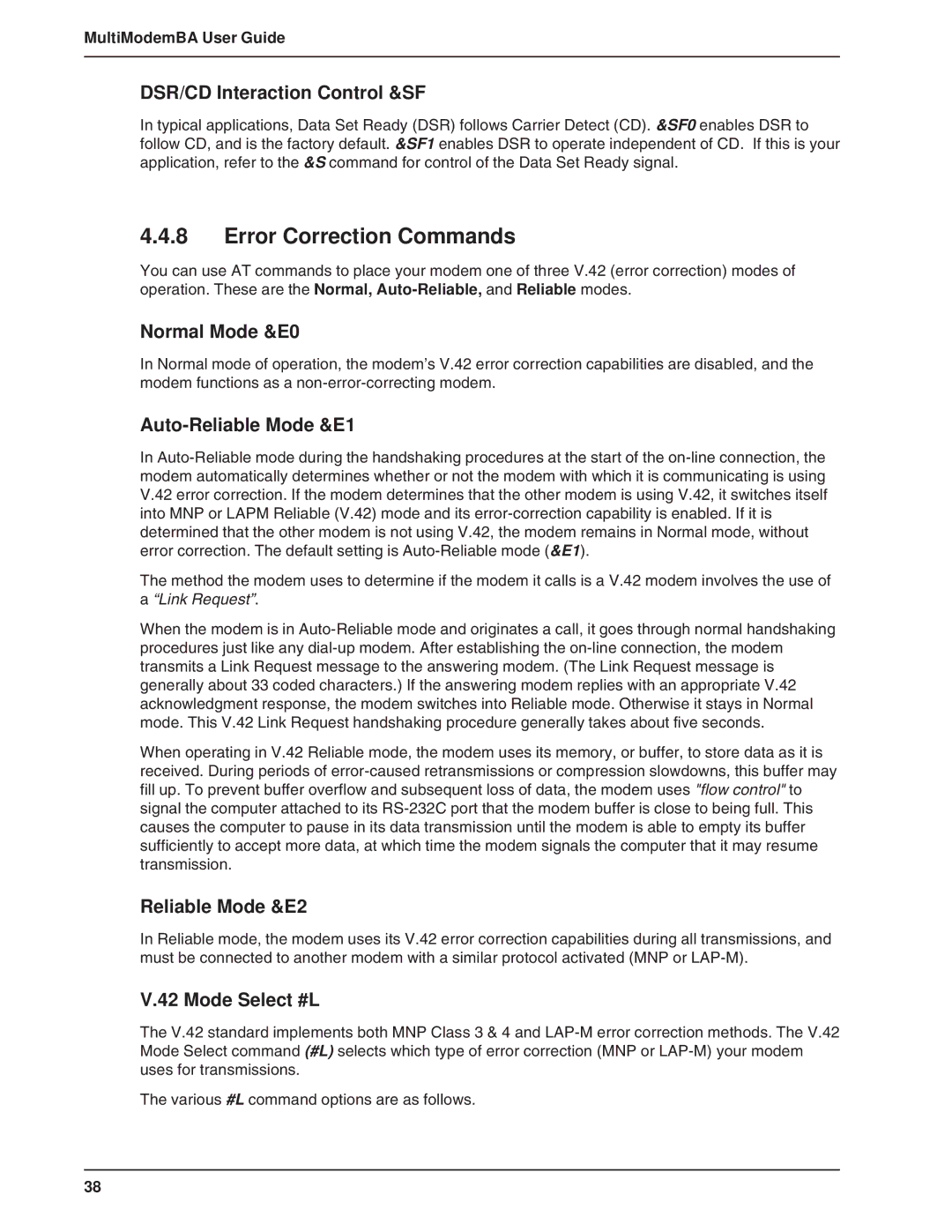
MultiModemBA User Guide
DSR/CD Interaction Control &SF
In typical applications, Data Set Ready (DSR) follows Carrier Detect (CD). &SF0 enables DSR to follow CD, and is the factory default. &SF1 enables DSR to operate independent of CD. If this is your application, refer to the &S command for control of the Data Set Ready signal.
4.4.8Error Correction Commands
You can use AT commands to place your modem one of three V.42 (error correction) modes of operation. These are the Normal,
Normal Mode &E0
In Normal mode of operation, the modem’s V.42 error correction capabilities are disabled, and the modem functions as a
Auto-Reliable Mode &E1
In
The method the modem uses to determine if the modem it calls is a V.42 modem involves the use of
a“Link Request”.
When the modem is in
When operating in V.42 Reliable mode, the modem uses its memory, or buffer, to store data as it is received. During periods of
Reliable Mode &E2
In Reliable mode, the modem uses its V.42 error correction capabilities during all transmissions, and must be connected to another modem with a similar protocol activated (MNP or
V.42 Mode Select #L
The V.42 standard implements both MNP Class 3 & 4 and
The various #L command options are as follows.
38
